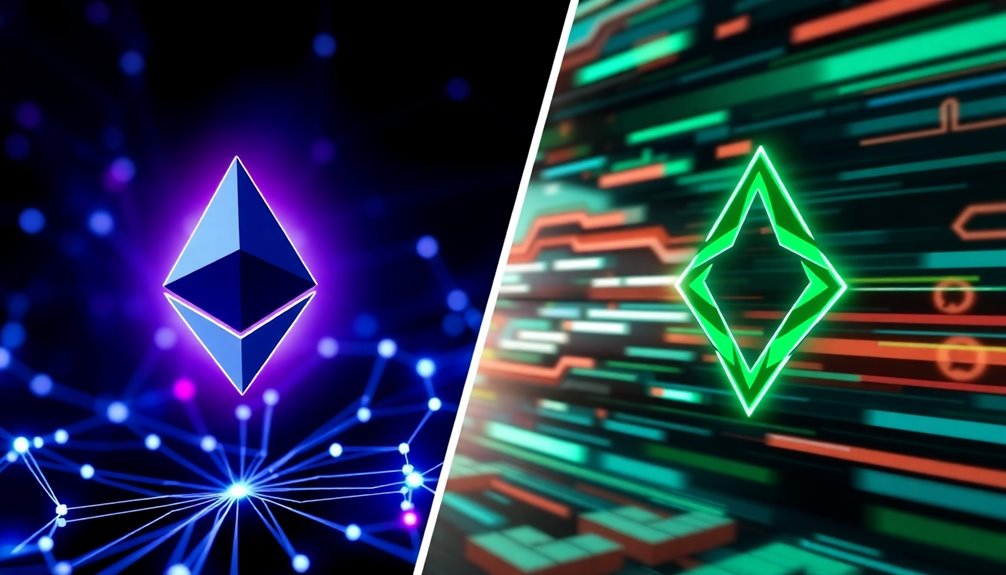In the ongoing debate between Ethereum and Solana, Franklin Templeton suggests a noteworthy shift in the market dynamics. While Ethereum's market cap and DeFi dominance are impressive, Solana's unique Proof of History mechanism is catching attention for its speed and low costs. As developers increasingly favor Solana for new projects, you might wonder what this means for the future of blockchain technology. Are we witnessing the rise of a new contender?

When comparing Ethereum and Solana, you're diving into two of the most significant players in the blockchain space. Ethereum, launched in 2015, pioneered smart contracts and decentralized applications, securing its position as the second-largest cryptocurrency by market capitalization. In contrast, Solana emerged in 2017, quickly gaining a reputation for its innovative Proof of History (PoH) consensus mechanism, which enables rapid transaction processing.
In terms of market position, Ethereum boasts a market cap exceeding $344 billion, while Solana, with around $103.74 billion, is growing at a remarkable pace. Although Ethereum dominates in decentralized finance (DeFi) and non-fungible tokens (NFTs), Solana excels in high-speed applications, making it a formidable competitor. Notably, Solana can manage over 2,600 transactions per second efficiently, significantly outperforming Ethereum's transaction capabilities.
Both platforms have unique consensus mechanisms that cater to different needs; Ethereum employs Proof of Stake (PoS), enhancing security and decentralization, while Solana's PoH facilitates faster transactions, processing over 2,600 transactions per second compared to Ethereum's mere 15.
Ethereum's Proof of Stake enhances security, while Solana's Proof of History enables lightning-fast transaction processing.
When it comes to transaction fees, Ethereum users often face high costs, especially during network congestion. In contrast, Solana offers significantly lower fees, averaging just 0.00025 per transaction. This cost efficiency enhances user experience and encourages broader adoption of Solana's platform.
While Ethereum's Layer 2 solutions can lower fees, they still can't match Solana's accessibility, making Solana a more attractive option for newcomers and smaller transactions.
Growth trends indicate that Solana has outperformed Ethereum in certain metrics since 2023, suggesting a shift in market dynamics. Although investing in Solana presents high-risk, high-reward opportunities, Ethereum remains a safer long-term investment due to its established ecosystem and institutional support.
Ethereum's DeFi dominance is backed by significant institutional investments, while Solana's DeFi ecosystem is rapidly expanding and starting to rival Ethereum in some areas.
In terms of security and decentralization, Ethereum's long history and vast network of validators make it highly secure and decentralized. While Solana has faced network outages that raise reliability concerns, its quicker transaction speeds and lower fees are appealing to developers, particularly in the NFT space.
As you explore these two giants, consider your priorities—whether it's speed, cost, security, or established ecosystems—as these factors will guide your investment decisions in this shifting market landscape.









